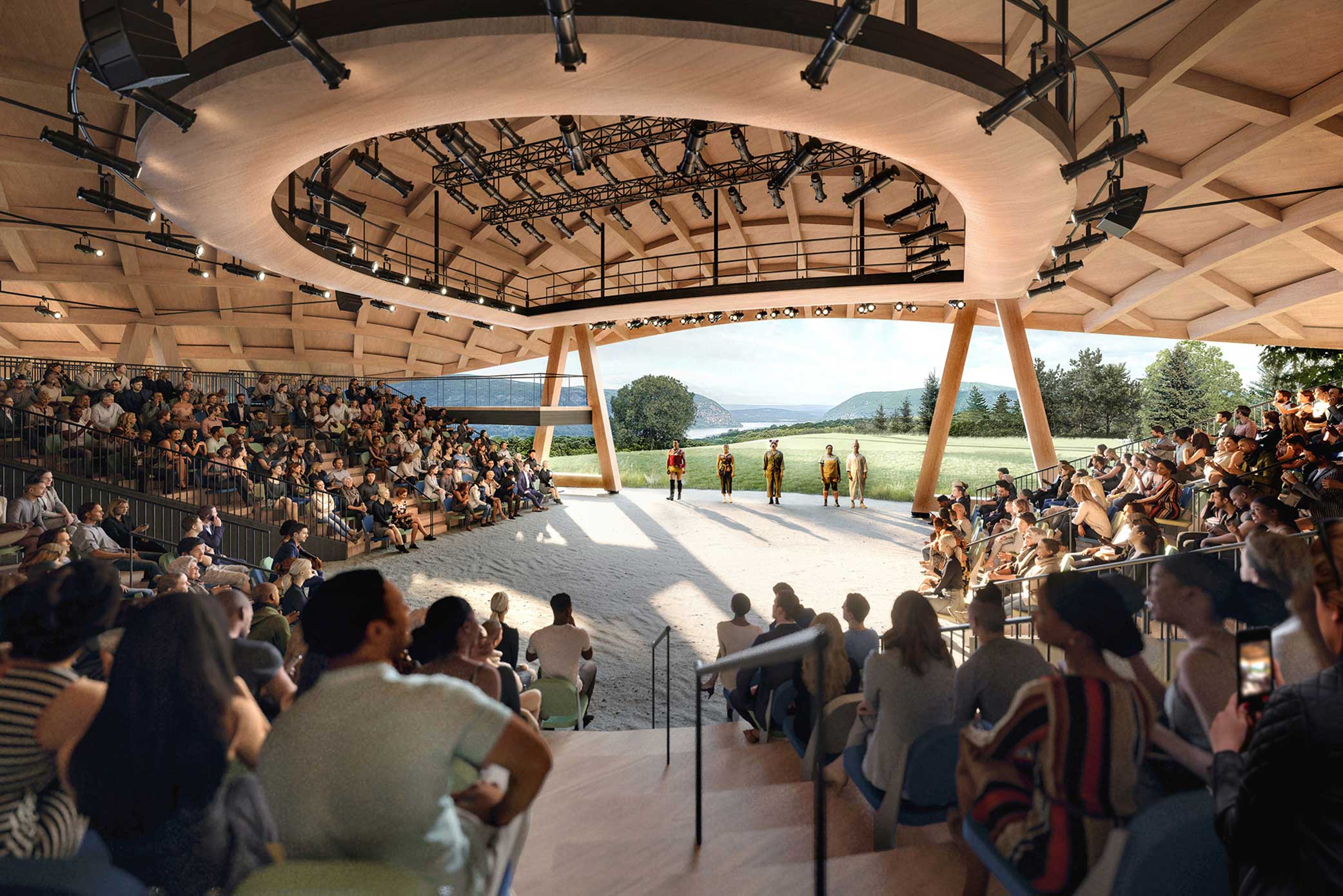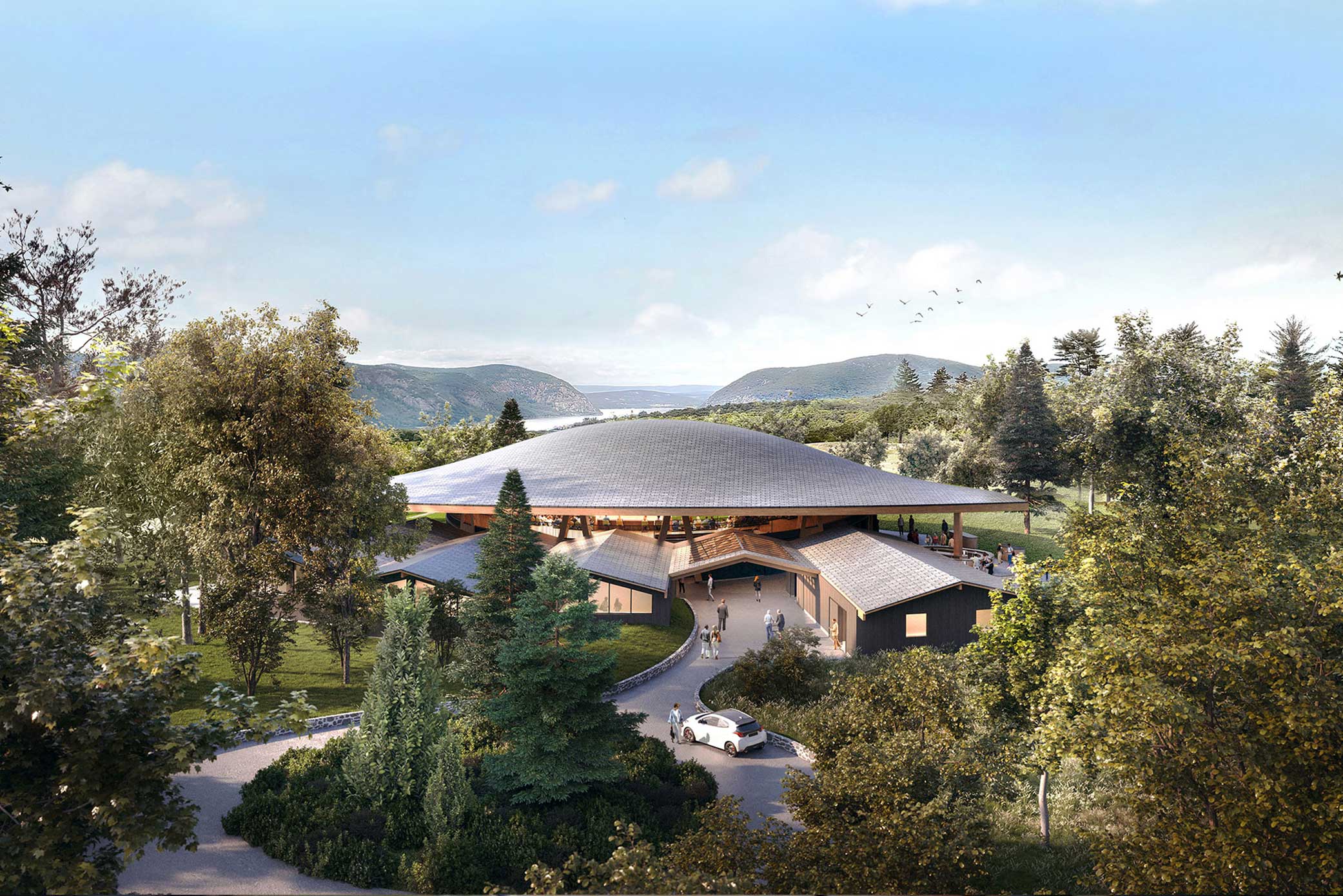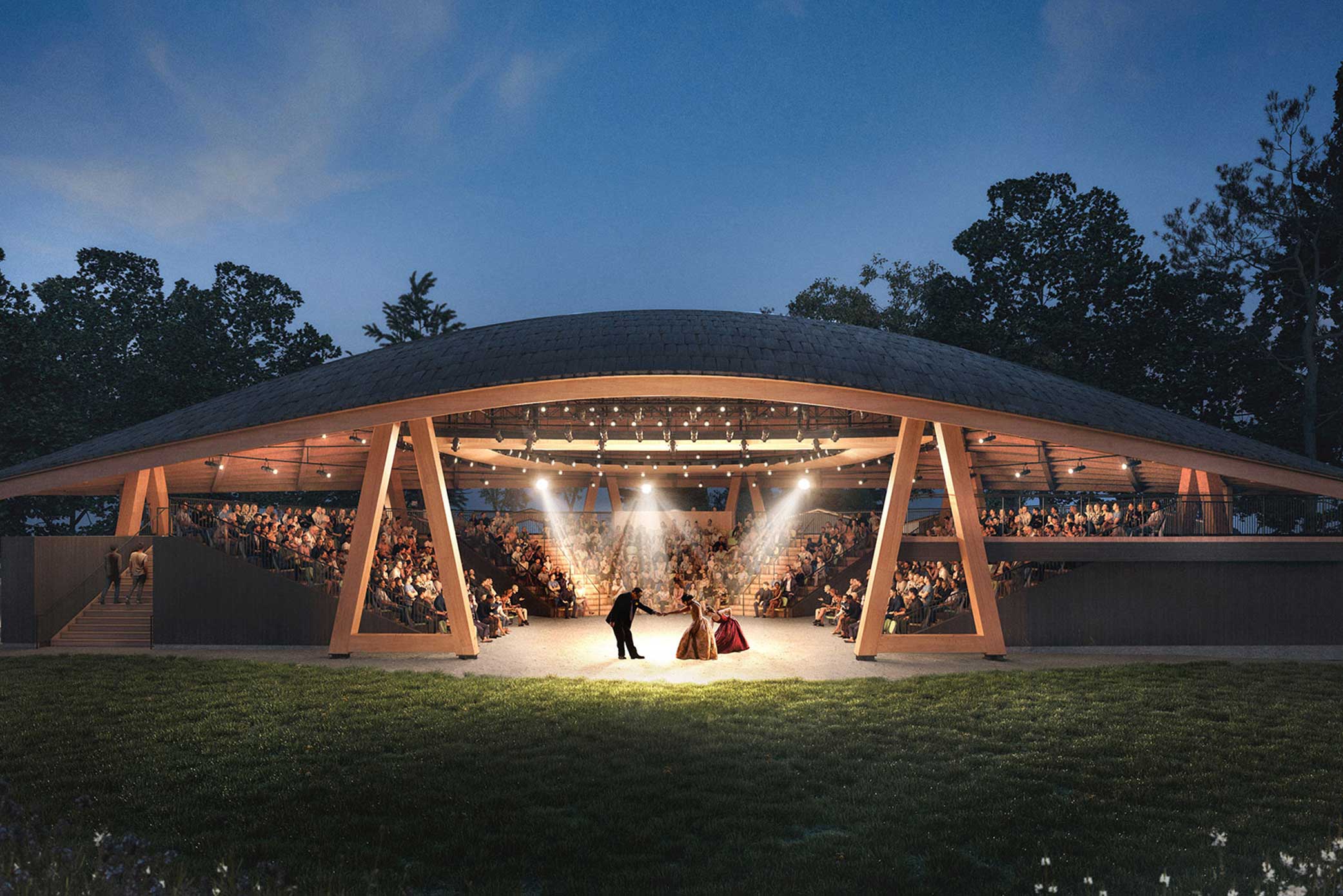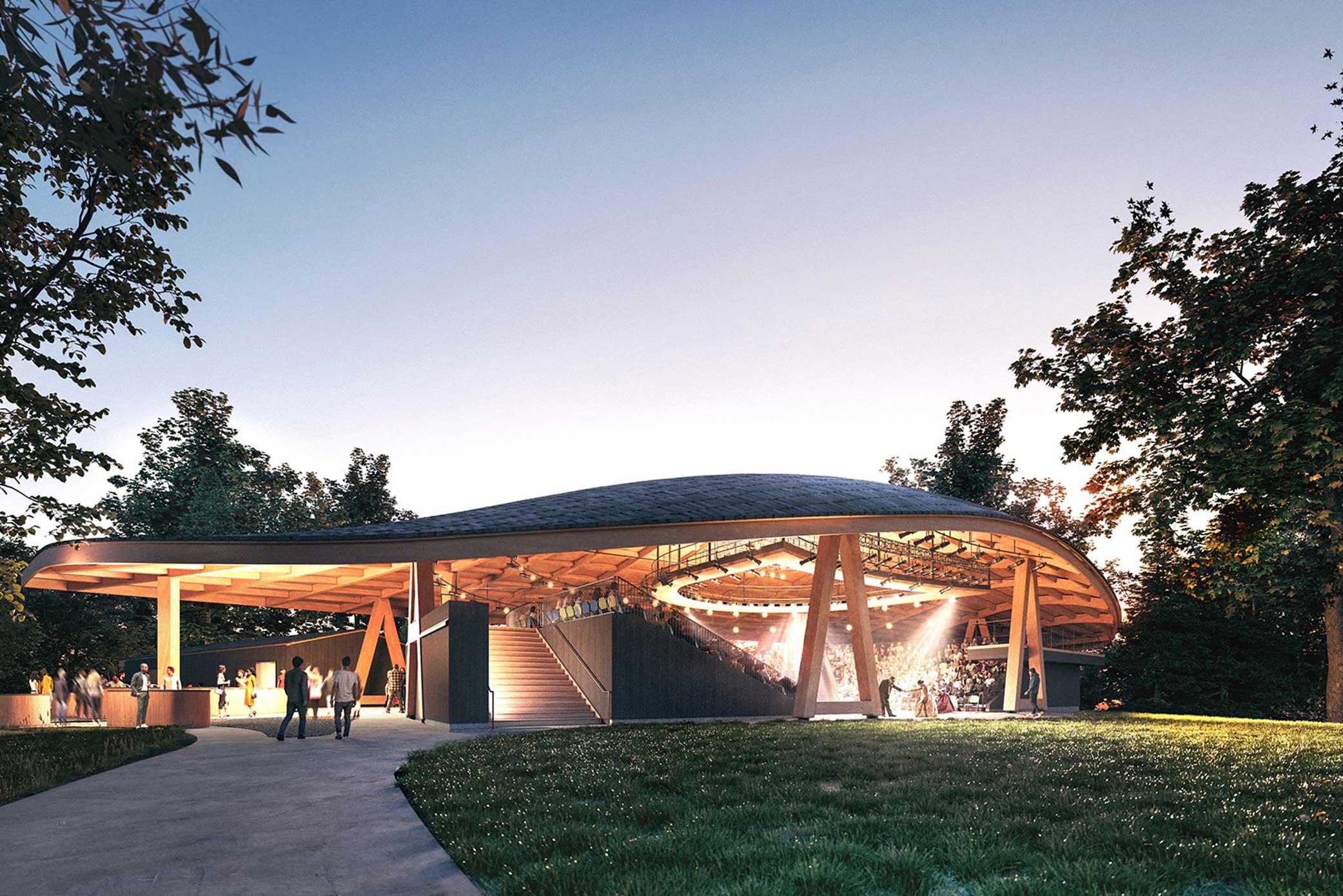Hudson Valley Shakespeare Festival




Photo Credit: Studio Gang
Hudson Valley Shakespeare Festival (HVSF) establishes a permanent home and more versatility for the actors, audience, and back-of-house of one of New York’s most beloved open-air theater companies. The gently curved, timber-framed grid shell improves year-round functionality while evolving HVSF’s tradition of immersive performances, opening directly onto the revitalized landscape designed by Nelson Byrd Woltz Landscape Architects and framing views of the highlands along the Hudson River. Architecture and nature work together to create a transformative new cultural destination for New York and the wider performing arts community.
Since its first season in 1987, HVSF’s productions have been staged in a seasonal tent at Boscobel House and Gardens overlooking the Hudson River. The new design on a nearby site remains open to the elements but elevates the overall theatrical experience for both actors and visitors through improved rehearsal, performance, and amenity spaces; expanded accessibility for more diverse audiences; and technical additions that open up new opportunities for HVSF productions.
Conceived as a single, fluid gesture, like the wing of a bird, the design encompasses the theater’s disparate functions, vastly improving circulation between spaces and across the site and enabling a wider range of cultural and community programming. Supported by exposed timber A-frame columns, the building’s natural material palette and curved form help the design blend into the rolling landscape. Positioning nature at the forefront of the theater’s creative work, the stage’s proscenium arch serves as both an entrance for patrons and actors, and a natural backdrop for the company’s open-air performances. Picnic lawns on the hill around the theater encourage visitors to gather before and after shows to enjoy sweeping views.
Natural ventilation and solar shading around the roof’s perimeter help passively cool the building. They work in tandem with the project’s other green strategies, including low-carbon mass timber, photovoltaic panels, rainwater harvesting and reuse, and increased biodiversity, to target LEED Platinum—the first such certification for a purpose-built US theater. Through its care for the environment, and the planet more broadly, the design aims to ensure the company’s productions and the diversity of the natural world remain center stage for many seasons to come.
The landscape design replaces the site’s water-intensive former golf course with restored native grasses and wetlands that support biodiversity and decrease resource use. The enhanced arrival sequence features an adapted entry road, screened from the primary roadway with native plantings and trees, which leads to a revitalized parking lot that is now lushly planted. The circulation design grants visitors a variety of choices for continued exploration: a universally accessible path to the hilltop picnic lawns and theater provides views of the Hudson River’s Wind Gate geologic formation, trees planted along the lawns bring moments of shade for guests, and mown pathways allow visitors to immerse themselves in the meadow ecology. The result is a partnership between history, nature, community, and theater.
- Client: Hudson Valley Shakespeare Festival
- Architect: Studio Gang
- Structural Engineer: Thornton Tomasetti
- Civil Engineer: Badey & Watson Surveying & Engineering PC
- Geotechnical Engineer: Tectonic Engineering Consultants, Geologists & Land Surveyors, D.P.C
- MEP, IT, Security, Sustainability Consultant: Buro Happold
- Lighting Design Consultant: Tillotson Design Associates
- Landscape Architect: Nelson Byrd Woltz Landscape Architects
- Acoustic Consultant: Threshold Acoustics LLC
- Graphic Design Consultant: Flyleaf Creative Inc.
- Completion Year: TBD
- Location: Garrison, NY
- Building Size:
6,800 SF (Theater);
5,000 SF (Back of House);
250 SF (Concessions);
1,800 SF (Public Washrooms) - Capacity: 480 seats
